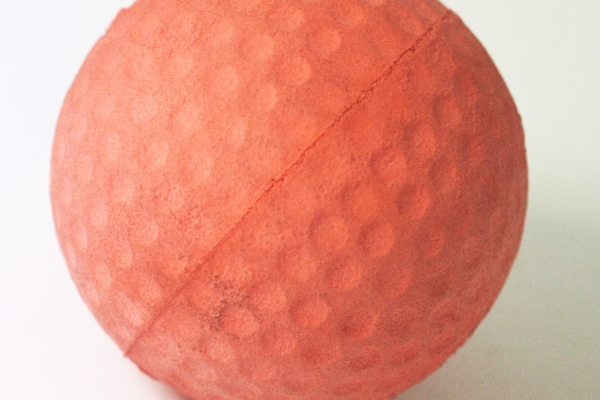
It looks like the manufacturers of this soft coral-pink foam sphere have made a mould of a golf ball, and cast a self-skinning polyurethane foam in it, perhaps as part of a kid’s toy golf set. This material comes in two parts – a liquid and a catalyst, which, when mixed and poured into a mould, will expand up to six times its original size. As it cures, or ‘goes off’, a tough outer flexible skin forms, which picks up the detail in the mould and creates a visible seam line, which needs to be trimmed off. It can be used in open or closed moulds, as the skin starts forming as soon as the material has finished expanding, not when it reaches a surface or is exposed to air.
This is an example of an open cell, or reticulated foam, with a tough, flexible, high-density skin and a softer, low-density core, which makes it more durable than other foams, as the bubble structure is not exposed. This foam can be made in different levels of hardness for various applications such as steering wheels or squeezy stress-balls. Self-skinning foam is also used for special effects and prosthetics like ‘fat suits’ in the entertainment industry, as the rubber skin can be moulded and painted to look and behave like human flesh.
Sample ID: 411
Add materials you find interesting to your own selections.
Use the  button to select a material and get started.
button to select a material and get started.


